With Legends of Runeterra, Riot wants to overhaul the crowded card game market
Hands-on with the League of Legends CCG.
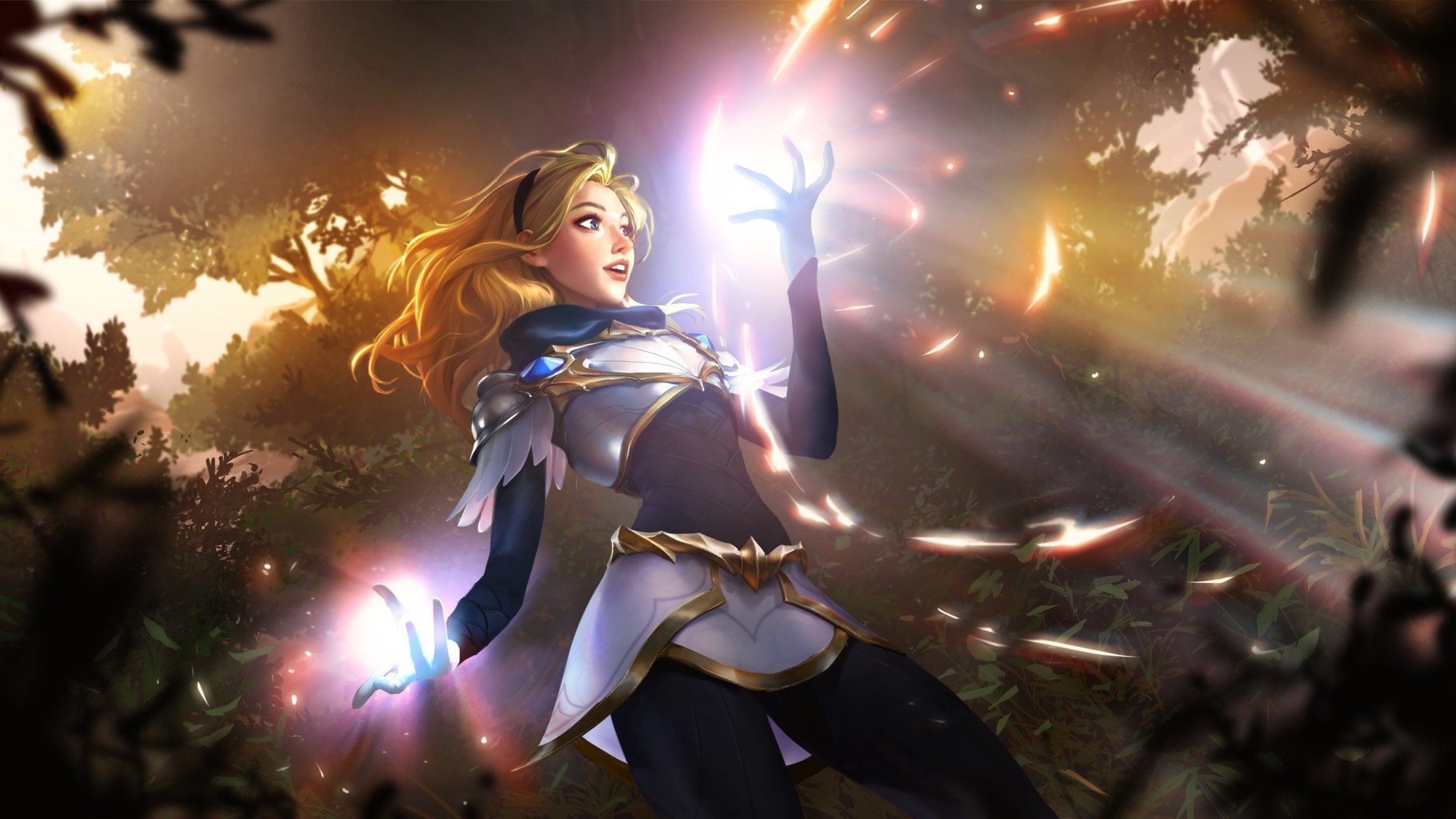
The lack of a second title in Riot Games’ roster has been a community in-joke for years. The League of Legends developer has dined out on the success of its smash-hit MOBA for a decade, but for its tenth anniversary, it’s finally adding a new arrow to its quiver.
Legends of Runeterra is a card game set within the League of Legends universe, drawing on characters found throughout that game’s expansive lore. Long-term fans will already be familiar with the setting; Runeterra is the continent on which LoL and the political machinations that underpin it take place. While League of Legends’ 140-strong roster of characters hails from every corner of its world, Legends of Runeterra’s first card set will feature only 24 of them—four from each of six regions—whose strengths and weaknesses are shaped by the nations that they call home.
Noxus, a warmongering state that values strength above all, is represented by characters like Darius and Draven, whose brute force makes them champions terrifying to face one-on-one, but which are often unable to cope with a unified assault. By contrast, peaceful Ionia opts for harmony, drawing on the combined strength of multiple units, while the inhabitants of the Freljord’s icy wastes use their own resilience—or strength-sapping ice magic—to survive.
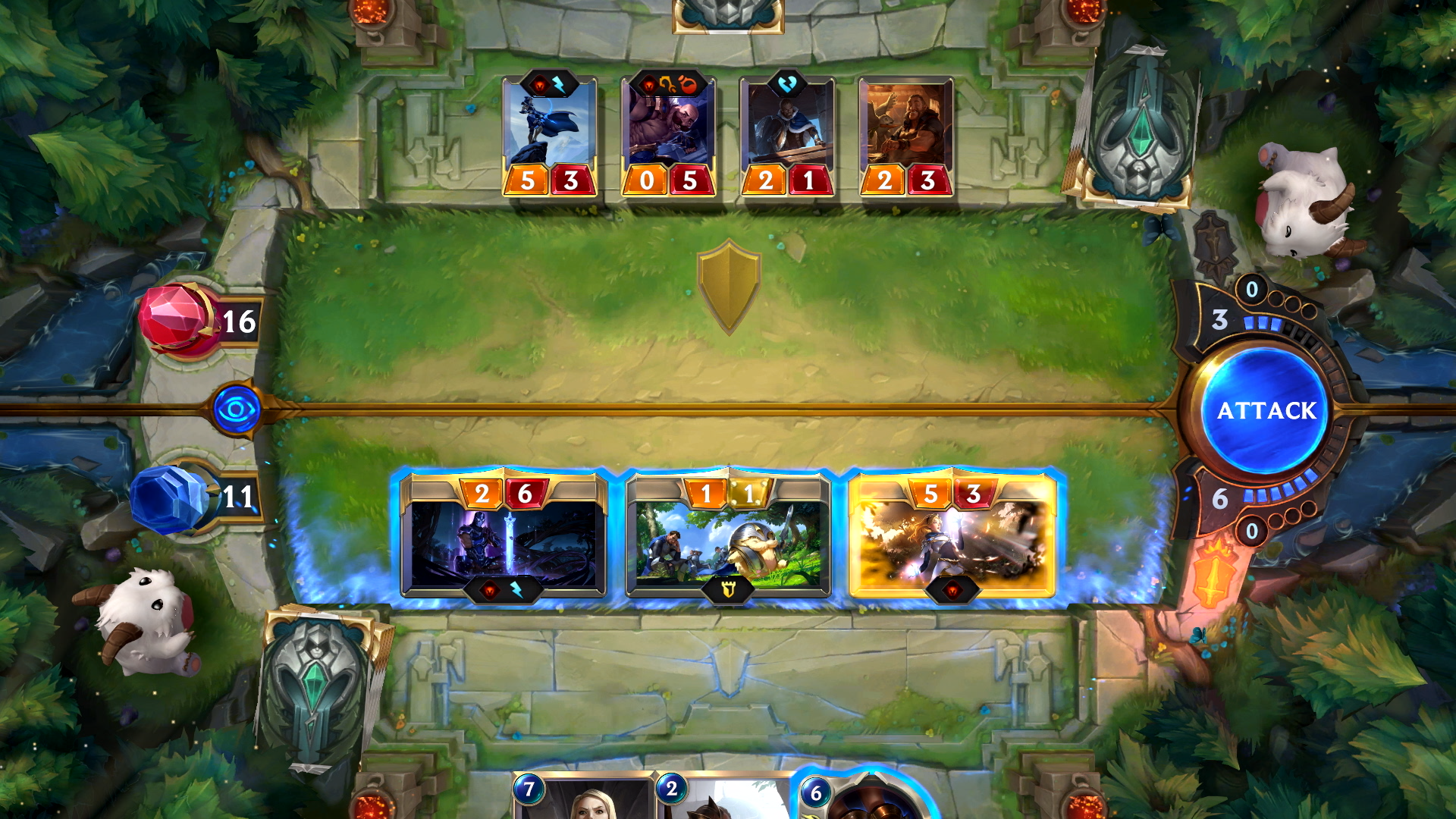
While the world and characters of League of Legends underpin the game, CCG veterans should recognise many of the ideas which have helped shape it. The influence of both Magic: The Gathering and Hearthstone is immediately apparent, but Riot’s not relying solely on LoL’s personality to set Legends of Runeterra apart.
Players take turns to attack and defend during Legends of Runeterra’s round-based combat. At the start of a turn, strategies are set out; offences strengthened, defences bolstered, or mana conserved for later in the round. Once both sides are ready, combat begins, with the attacking player setting out units while the defender uses cards to block. If an attacking unit isn’t stopped, it’ll deal damage directly to the defender’s health pool, the Nexus, but if it’s blocked, both units will be worn down as they slam together.
During opening rounds, combat is simple, with low-stakes skirmishes usually spelling the end for both units involved. With each subsequent round, however, players unlock extra mana crystals, allowing them to play more powerful units and spells. At that point, combat becomes a far more back-and-forth affair as you attempt to counter your opponents’ moves with spells—buffing and bluffing to boost your own characters or encourage your opponent to commit powerful units to unwinnable matchups. Those spells—divided into either Slow, Fast, or Burst categories—are woven into each round, often turning the tables on an unfortunate exchange.
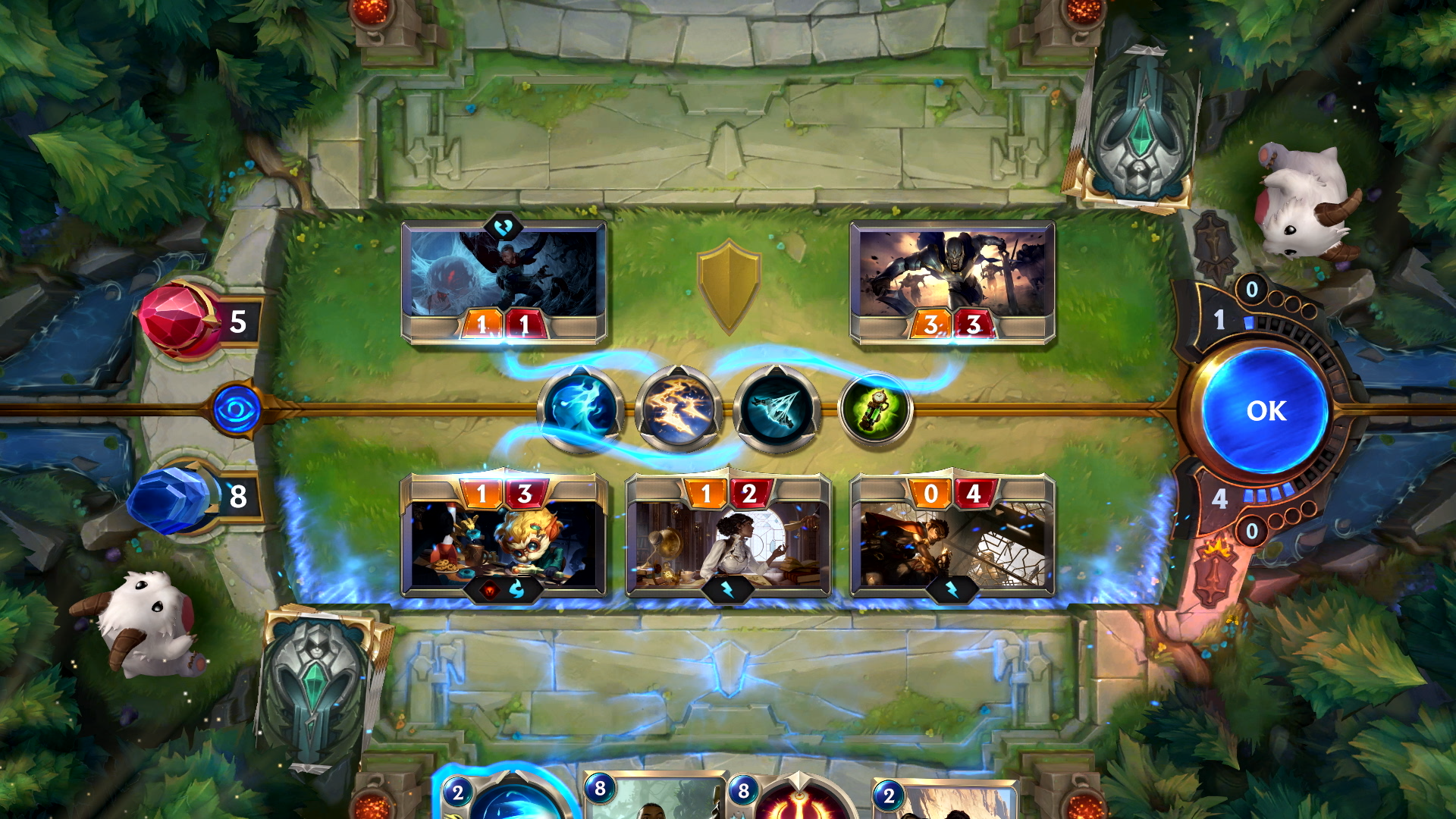
After combat is resolved, defeated units are removed from play, and each side is offered a moment of respite in which to plan its next move. Remaining mana can be spent on new units, helping you prepare for the next round, but it can also be partially conserved to cast spells next turn. With ranks reinforced and strategies drawn up, the board rotates, swapping defence and attack.
The biggest gaming news, reviews and hardware deals
Keep up to date with the most important stories and the best deals, as picked by the PC Gamer team.
Spending half of each game on the back foot might sound like a recipe for lengthy, drawn out battles, but each player’s Nexus has only 20 health, meaning an early assault from a strength-in-numbers region like Ionia can see you staring down the barrel of defeat within just a few turns. While it’s possible to regain the upper hand as slower decks come online, your base’s relative fragility means that matches often don’t require a particularly long-term strategy.
Choose your fighter
While you’re calling the shots, it’s the characters on the field that are the ones actually duking it out. Legends of Runeterra splits its units into two main camps; Champions, chosen from among the warriors and spell-slingers that League of Legends players will know, and Followers—background characters who fill up the rest of Runeterra.
As well as their famous names, Champions have qualities that set them apart from their lowly Followers. Boosted stats are accompanied by some powerful extra effects; the tanky Braum can regenerate, returning him to full health after combat, while the shadowy Zed spawns a stealthy clone of himself every time he attacks, automatically bolstering his offensive capabilities.
Often threatening even in the early stages of the game, Champions can also be levelled up through the completion of in-game goals, increasing their stats and improving their abilities, before entering their final form in showy cutscenes reminiscent of fighting game finishers. In many cases, champions need to be in play to work towards their improved state, but rare exceptions such as Yasuo can be improved without setting foot on the field—as long as the air-bending ronin is in hand, he can watch enemy units being stunned or recalled by his allies. Once six cards have been incapacitated in this manner, an enhanced Yasuo can take the field in time to deal bonus damage every time another stun lands.
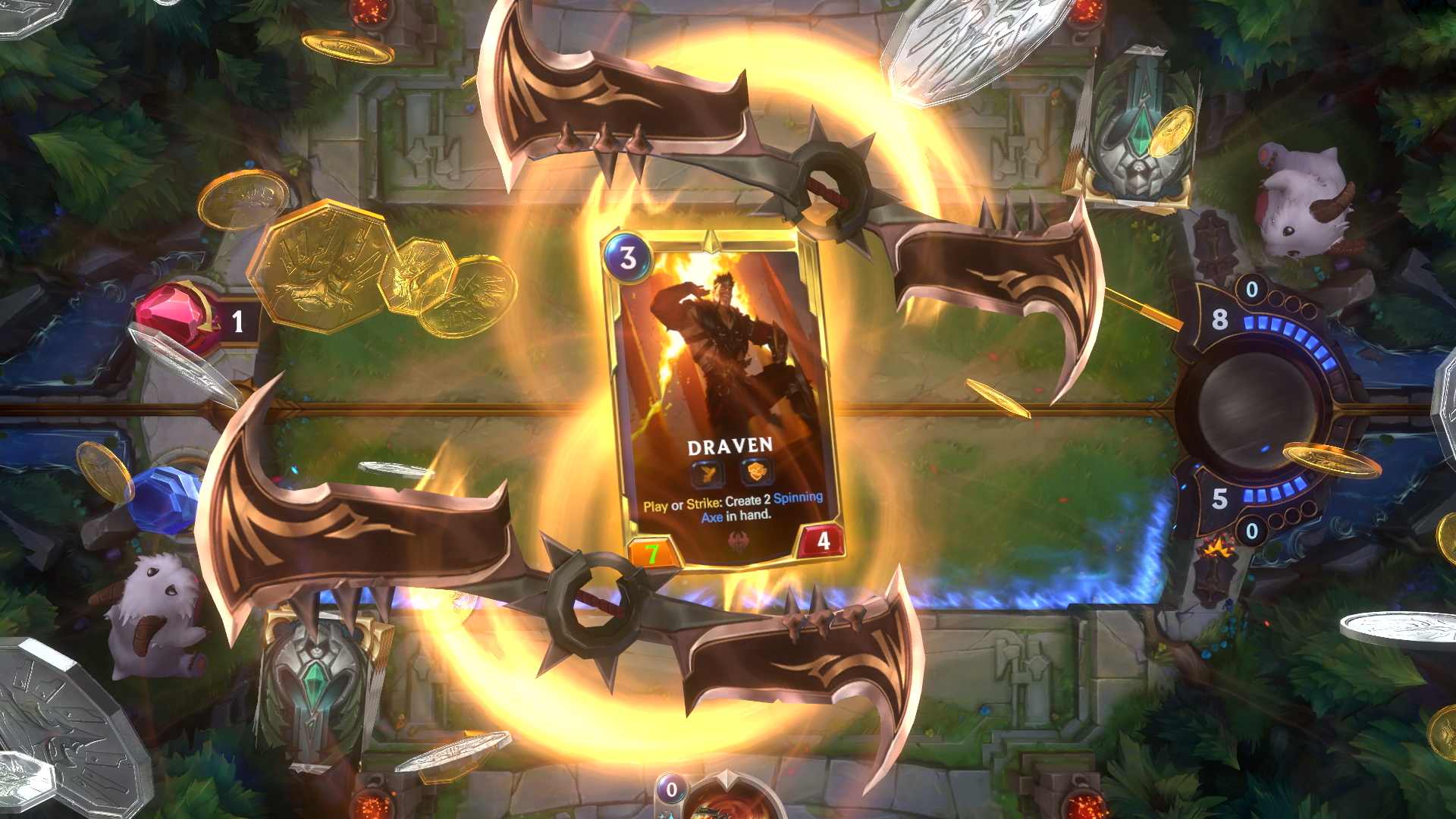
Followers can’t level up, but their abilities can still be crucial to a winning strategy. ‘Sturdy’ units take reduced damage from attacks, making them especially useful in the early game, while ‘Challengers’ can choose which enemy unit will block them, and some particularly nimble characters will land their attacks before their opponents, allowing for more control over each clash. Elsewhere, Followers contribute to Runeterra’s wider narrative—Demacia’s Tianna Crownguard is the aunt of champions Lux and Garen, and the veteran of several backstories, including the recent crossover between Riot and Marvel Comics, and a lowly Poro Herder illustrates the difficulty of life in the Freljordian tundra.
It’s all in the cards
It’s the interactions between Champions and their Followers that drive Legends of Runeterra’s deckbuilding. Decks consist of 40 cards, can draw from either one or two of the game’s six regions, and feature up to six Champions, with as many as three copies of each card permitted within a deck. That allows for impressive depth as you drill into a specific strategy, or relative breadth, drawing on the combined abilities of multiple champions and regions to multiply your strengths and cover as many defensive bases as possible.
Champions with singular win conditions are accompanied by cards that compliment their main focus. The stealthy Teemo doesn’t pack much of a punch by himself, but his Followers help fill enemy decks with poisonous mushrooms that damage their Nexus every time they draw a card. Other decks will focus on combined strength, and I found that stalwart Demacians and resilient Freljordians worked well side-by-side, and let me change my strategy on the fly depending on the champions I currently controlled. My glass-cannon build, based on hyper-carry Noxians and powerful but fragile units from the Shadow Isles, didn’t turn out to be quite so successful.
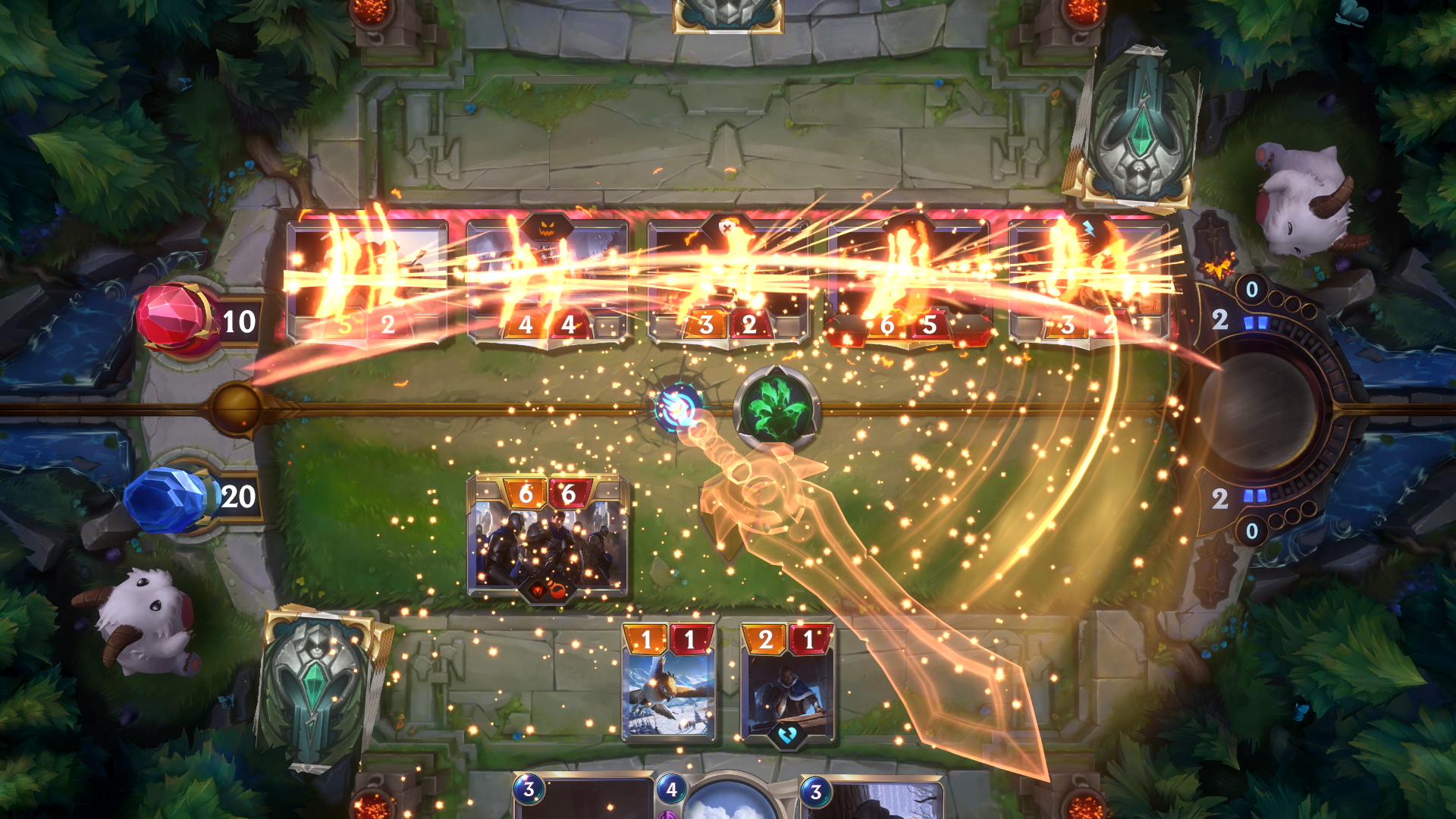
The elephant in the room during my Legends of Runeterra preview event was Artifact. Valve’s ill-fated card game shares more than cursory similarities with Legends of Runeterra, but Riot is taking steps to ensure that its effort carves out its own space in what’s already considered a near-saturated genre.
Legends of Runeterra’s design director, Andrew Yip, says that his team wants "to innovate the CCG". As a result, random elements are out, replaced by deeper deckbuilding and the conversational tone of round-based combat. The rotation system popularised by Hearthstone and Magic: The Gathering has been removed in favour of monthly balance changes and new expansions every four months. And random card packs are no more, replaced by rewards based around each region, and ‘Wildcards’ that can be swapped for the specific cards that you actually want in your deck. These will be available for purchase with real money, but each player can only acquire a limited number of them each week.
Legends of Runeterra seems like a well-crafted experience that promises to open a wider avenue for League of Legends’ narrative and ask serious questions of the card game genre, but the true test is likely to lie in the community’s response to Riot’s first new offering in more than ten years.

